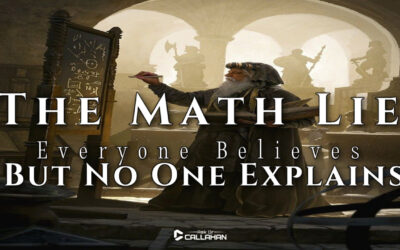Does your teen shut down when it’s time to do geometry proofs?
You’re not alone. Proofs are one of the biggest roadblocks for high school students.
But here’s the truth: proofs don’t have to end in tears.
With the right framework, your teen can approach proofs like solving a puzzle — step by step, one piece at a time. And you don’t need to be a geometry expert to help.
Why Proofs Feel So Hard?
Most students hit a wall with proofs because:
- They don’t know where to start.
- They can’t see how the steps connect.
- They feel pressure to “just get the right answer.”
That’s why they get overwhelmed. Proofs feel like riddles in a foreign language.
The 3-Step Proof Framework
Here’s the simple method I teach parents and students:
- Identify the Goal
- Ask: What are we trying to prove?
- Write it down in plain English.
- This keeps the finish line clear.
- List the Givens
- Copy the facts the problem provides.
- These facts are your “starting pieces.”
- Don’t skip this step — it’s your foundation.
- Connect the Dots
- One step at a time, use definitions, theorems, or properties to move from the givens to the goal.
- Think of it like snapping Lego bricks together.
A Real-Life Example (Not Math!)
🚗 Real-Life Proof: I Need Gas for My Car
Goal (What are we proving?)
I need to stop for gas.
Givens (What we know):
- My car will not run if the gas tank is empty.
- The gas light comes on when it is nearly empty.
Reasoning (Step by Step):
- If the gas tank is empty, then the car will not run. (Given Fact)
- My gas gauge light is on. (Observation)
- The gas light comes on when it is nearly empty. (Given FACT)
- Therefore, my car will soon not run. (From 1 + 2 + 3)
- If I want to keep driving, I need to stop for gas. (Logical conclusion)
Proofs are really just logical reasoning. You use them every day.
Geometry proofs work the exact same way — just with shapes and numbers instead of gas tanks.
Parent Coaching Tips
- Don’t feel like you need every answer. Your role is to ask the right questions.
- Use reasoning prompts like:
- “What are we trying to prove?”
- “What facts do we already know?”
- “What’s the next small step?”
- Celebrate progress — even if they don’t finish the proof perfectly.
Watch the Video
🎥 This blog post is just the starting point. In my new YouTube video, I walk through this 3-step method. Please like and subscribe on our YouTube channel and help us grow our community there.
Final Word
Proofs don’t have to be a battle. With the right framework — and a little encouragement from you — your teen can learn to tackle proofs with confidence.
Watch the video, and start making proofs simpler today.
5 FREE Resources Just for You
📚 FREE Resources Just for You Sign up and get the resources, weekly updates, and often discount codes. Discount codes reserved for email list participants. Join in today!






